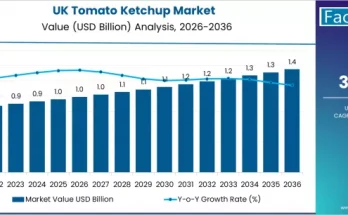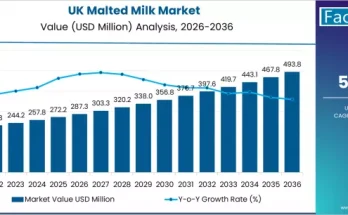The food culture market is evolving rapidly as global consumers embrace diverse culinary experiences, innovative products, and health-conscious eating habits. Food cultures, which encompass the traditions, preparation methods, and consumption practices associated with food, have become central to shaping consumer behavior, restaurant trends, and packaged food offerings worldwide.
Rising consumer interest in global cuisines, fusion foods, and specialty diets is influencing how businesses approach product development, marketing, and culinary experiences. The market reflects the growing intersection between food as a cultural expression, lifestyle choice, and functional necessity — highlighting the importance of understanding consumer preferences and regional nuances.
Market Overview
Food culture is a dynamic field that encompasses traditional recipes, modern culinary innovations, dietary habits, and social practices surrounding food consumption. The market includes a wide range of segments, from ethnic cuisines and specialty ingredients to ready-to-eat meals and health-oriented products.
Modern consumers are increasingly seeking foods that align with cultural authenticity, sustainability, and wellness. This has encouraged food producers, restaurants, and retailers to innovate and differentiate their offerings. Plant-based diets, organic ingredients, artisanal foods, and functional nutrition products are becoming key components of contemporary food culture.
Digital platforms, including social media, recipe apps, and culinary blogs, have further accelerated the dissemination of food trends and cultural practices. Consumers now explore international flavors, cooking techniques, and dining experiences with greater awareness, influencing market demand and driving global culinary exchange.
Regional Insights
North America leads in the adoption and promotion of diverse food cultures, with consumers showing strong interest in ethnic cuisines, functional foods, and organic products. Restaurants, food retailers, and meal-kit services are leveraging this trend to offer unique culinary experiences and culturally inspired menus.
Europe is a major player, with a rich history of regional food traditions and a strong emphasis on quality, sustainability, and artisanal foods. European consumers prioritize organic, locally sourced, and ethically produced ingredients, influencing both retail and dining sectors.
Asia-Pacific is witnessing significant growth in food culture awareness, driven by the region’s diverse culinary heritage, expanding middle class, and growing urbanization. Countries such as Japan, China, and India are blending traditional culinary practices with modern food trends, creating unique offerings in restaurants, packaged foods, and beverages.
In Latin America and the Middle East & Africa, growing urban populations and increased exposure to international cuisines are fueling interest in diverse food cultures. Consumers are seeking experiential dining, cultural fusion foods, and ready-to-eat products that reflect both global and local flavors.
Key Trends & Forecast
- Fusion and Ethnic Cuisines:
Consumers are increasingly exploring cross-cultural food experiences, driving the popularity of fusion dishes that blend flavors, ingredients, and techniques from multiple culinary traditions. - Health and Wellness Integration:
Food culture trends are heavily influenced by health consciousness. Products and meals emphasizing balanced nutrition, functional ingredients, and dietary compliance are gaining prominence. - Sustainability and Ethical Practices:
Consumers are favoring food options that prioritize sustainability, from farm-to-table sourcing to eco-friendly packaging. This trend encourages transparency and ethical practices across the supply chain. - Digital Culinary Experiences:
Online cooking tutorials, food delivery apps, and social media platforms are shaping consumer preferences and accelerating the adoption of global food trends. Virtual experiences and interactive content are redefining how food culture is shared and consumed. - Customization and Personalization:
Restaurants and food brands are increasingly offering customizable meals and ingredient choices to cater to dietary restrictions, cultural preferences, and lifestyle needs. - Culinary Tourism and Experiential Dining:
Travelers and food enthusiasts are seeking authentic culinary experiences that reflect regional traditions. Food tourism and cultural dining events are contributing to market growth and fostering global culinary exchange.
These trends collectively highlight the market’s shift toward personalized, health-conscious, and culturally rich food experiences.
Applications & End-Use Outlook
The food culture market influences multiple segments, including restaurants, catering services, packaged food products, culinary education, and food tourism.
In restaurants and foodservice, operators are innovating menus to integrate global flavors, regional ingredients, and dietary-friendly options. Cultural authenticity and culinary storytelling are becoming essential to differentiate offerings and enhance customer engagement.
Packaged and processed food sectors are responding to consumer demand for convenience without compromising on cultural authenticity. Ready-to-eat meals, meal kits, and culturally inspired snacks are increasingly popular among urban consumers and time-conscious households.
Culinary education and workshops are shaping how individuals engage with food culture, equipping consumers with skills and knowledge to replicate authentic cooking techniques at home. This segment is also influencing social media content, further expanding awareness and adoption of diverse food traditions.
Food tourism is a growing application area, where travelers explore local food markets, cooking classes, and culinary festivals to experience authentic regional flavors. Hotels, resorts, and tour operators are incorporating these experiences to attract culturally curious travelers.
Additionally, health-conscious and specialty food markets are leveraging cultural insights to create products that satisfy both wellness goals and traditional culinary preferences, enhancing consumer satisfaction and brand loyalty.
Conclusion
The food culture market is redefining how consumers interact with food, blending tradition, innovation, and lifestyle considerations. As globalization, digital engagement, and health consciousness continue to shape culinary trends, businesses are challenged to deliver culturally authentic, sustainable, and enjoyable food experiences.
Manufacturers, restaurants, and retailers are innovating to meet evolving consumer preferences while balancing quality, authenticity, and convenience. By leveraging cultural insights and technological tools, stakeholders can enhance product offerings, strengthen brand loyalty, and participate in a dynamic, interconnected global culinary landscape.
Comprehensive market intelligence can help businesses anticipate trends, adopt culturally relevant strategies, and capitalize on opportunities in the growing global food culture sector. Ultimately, food culture is more than consumption — it is a lifestyle, an experience, and a bridge connecting people and communities worldwide.
Browse Full Report – https://www.factmr.com/report/4414/food-cultures-market



